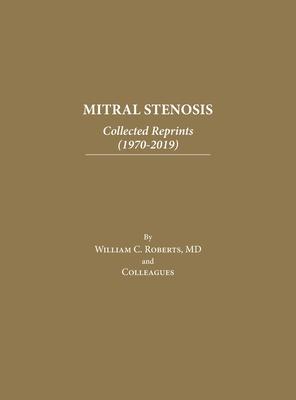This volume collects 16 articles on mitral stenosis written by Dr. William C. Roberts and colleagues between 1970 and 2019. It is part of a series of collected reprints published in 2023 gathering publications from Dr. Roberts' long career.
Preface
In the early parts of the 20th century, rheumatic mitral stenosis was a common and devastating condition. Elliott Cutler at the Peter Bent Brigham Hospital in Boston attempted in several patients mitral commissurotomy without success. It was not until 25 years later in Philadelphia that the procedure was carried out successfully. Thus, mitral commissurotomy became the first successful cardiac operation (patent ductus arteriosus and aortic isthmus coarctation are not part of the heart). Today, in the Western world, rheumatic mitral stenosis is relatively infrequent. Detailed morphologic study of the rheumatic mitral stenotic valve has disclosed that the thickening of the leaflets and chordae tendineae is due to superimposed fibrous tissue, not to intrinsic damage to the leaflets and chordae themselves. Occasionally, fibrin deposits are seen suggesting that the superimposed fibrous tissue is the result of organization of fibrin thrombi. Today in the Western world mitral stenosis is likely more commonly the result of massive mitral annular calcific deposits rather than the rheumatic process.
About the Author
William C. Roberts, MD (born September 11, 1932) is an American physician specializing in cardiovascular pathology. He is a Master of the American College of Cardiology and the recent editor of both The American Journal of Cardiology and the Baylor University Medical Center Proceedings. In 2016, he received the Lifetime Achievement Award from the American College of Cardiology. He is a graduate of Southern Methodist University and Emory University School of Medicine. After a 3-year residency in anatomic pathology at the National Institutes of Health, he was an assistant resident on the Osler Medical Service at The Johns Hopkins Hospital in Baltimore for a year and then a fellow in cardiology at the National Heart Institute in Bethesda for a year. He has published over 1700 articles, authored or edited 24 books, and lectured in >2000 cities (some several times) throughout the world. For most of his career at the NIH, he was chief of the Pathology Branch in the National Heart, Lung, and Blood Institute. Since March 1993, he has been executive director of the Baylor Heart and Vascular Institute of Baylor University Medical Center in Dallas, Texas.
